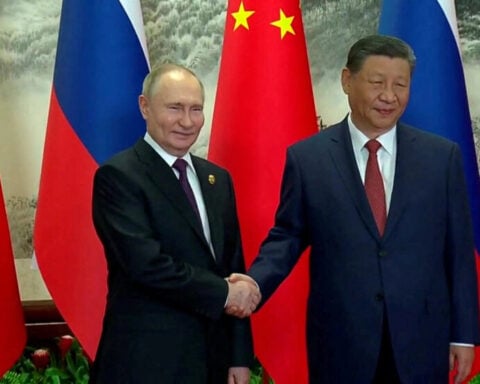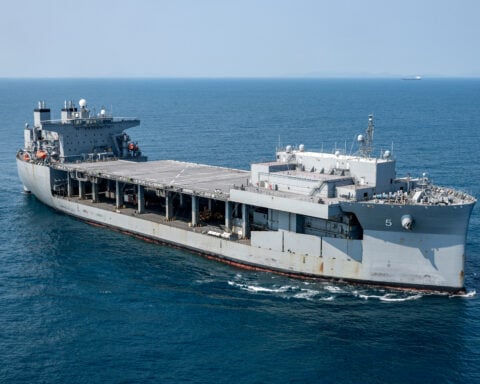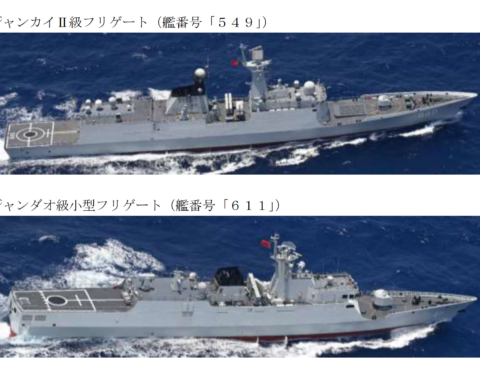
The Pentagon must make modernization choices between legacy systems and new technology like lasers by evaluating each platform’s capability, the top Democrat on the House Armed Services Committee said this week.
“The aircraft carrier battle groups have been enormously helpful” in deterring Iran and its proxies over the last six months, Rep. Adam Smith (D-Wash.) said of aircraft carriers in the eastern Mediterranean and Red Sea. He added that investing in lasers for directed energy effects could lead to a dead end.
“Some technologies are more promising than others,” he said, mentioning the difficulty of concentrating laser energy with limited range and operating difficulties under some weather conditions. Smith noted that while he’s not an expert, microwave technology could be the better investment in that regard.
When making budget tradeoffs, the question to ask about legacy systems is “what are the sustainment costs” and “what are the operating costs” to keep them in the inventory. Smith said he and HASC Chairman Rep. Mike Rogers (R-Ala.) are in agreement on that.
Speaking at the American Enterprise Institute Tuesday, Smith added that “getting rid of legacy systems is important,” but may be extremely difficult for program offices in the Pentagon and representatives who could lose jobs in their districts.
Pointing to the $900 billion defense budget, Smith said “you can’t say we have scant resources” in addressing gaps in national security. “What are we trying to do?” in closing that gap other than boosting Pentagon spending, he asked rhetorically.
Answering a question from the audience, Smith said the wisest investments in the future would be in “drones and missile and defense drones.”
Smith argued that due to political realities in the United States, “there is no portion of our [overall] budget that people say is good” that doesn’t need more money. But on top of that, the public doesn’t want to pay more taxes and the national debt continues to rise.
“At $900 billion, I’m focused on the money we have and how can we leverage allies and partners,” as in the Australia-United Kingdom-United States technology agreement known as AUKUS, or with Turkey to boost its production of 155 mm artillery rounds to assist Ukraine.
“Huffing and puffing doesn’t work” when it comes to addressing security issues, he said.
As for the letter to Pentagon and Navy leaders calling for two Virginia-class submarines in the Fiscal Year 2025 budget, Smith said he didn’t accept the Defense Department’s official reason that “industry just can’t produce them.” The Navy sought one boat in FY 2025, a departure from the two boats it has requested in the last few years. General Dynamics Electric Boat, HII’s Newport News Shipbuilding and their suppliers need “long-term demand signal” to increase production.
The two yards are producing 1.3 submarines per year. They are the only American yards capable of building nuclear-powered submarines.
“Attack subs are really important to our defense,” Smith said.
Smith returned several times during both the discussion and question-and-answer period to how aggressive and successful China, Russian, Iran, North Korea and extremist groups like Hamas have been in delivering their message to their own people, followers and to the larger world.
Using the defense budget as an example, China says its spends $200 billion on that sector, while blasting the United States for spending more than four times that amount. The reality is Beijing is spending about $700 billion because most of its defense spending isn’t transparent, Smith said.
“They’re very aggressive about their messaging,” he said.
He added: “There are people in the United States walking around saying the U.S. … started the war in Ukraine. Smith said the “the guys who sent in tanks” did, referring to the Russians.
Calling those four nations “the CRINGE,” he said they have been made inroads in public opinion in Africa and South America with their steady trumpeting “that everything bad that is happening is caused by us” and allies and partners in Europe and the Indo-Pacific. That messaging covers Ukraine, the Israel-Hamas conflict and the Houthis’ actions in the Red sea.
“Basically, they’re trying to smash … the rules-based international order and replace it with an authoritarian model of government and development,” Smith said.
“They are working together – 100 percent” to reach that goal. He cited North Korea shipping artillery shells to Russia to rebuild its stockpile and China moving chip technology to Russia in exchange for oil and other energy supplies.
“China, Russia and Iran feel pretty good about themselves,” he said.
Smith added: “We need to put out what they’re really doing.” He specifically cited Beijing imposing a broad trade embargo on Australia for questioning China on the origins of the COVID-19 pandemic and its territorial claims in the South China.
The messaging has to explain how closer economic ties with Washington will benefit individual nations in the Global South economically and improve their security.
“The one thing [those countries] don’t want is global war” involving China and the United States, Smith said.





